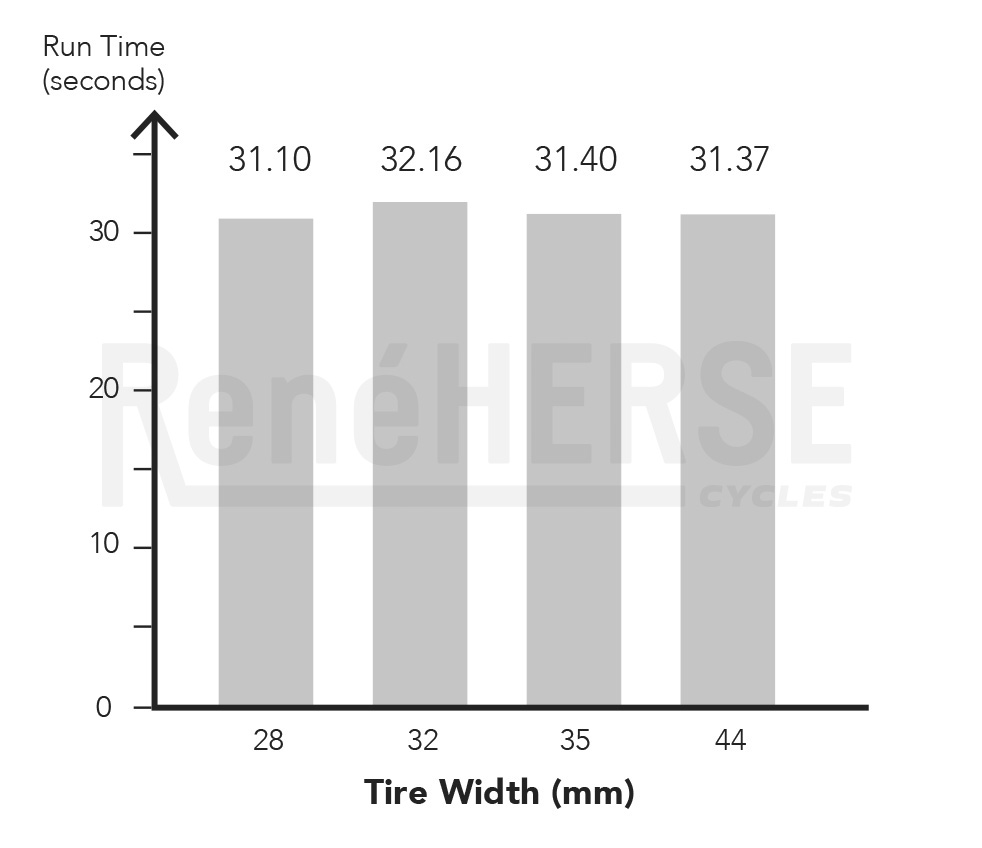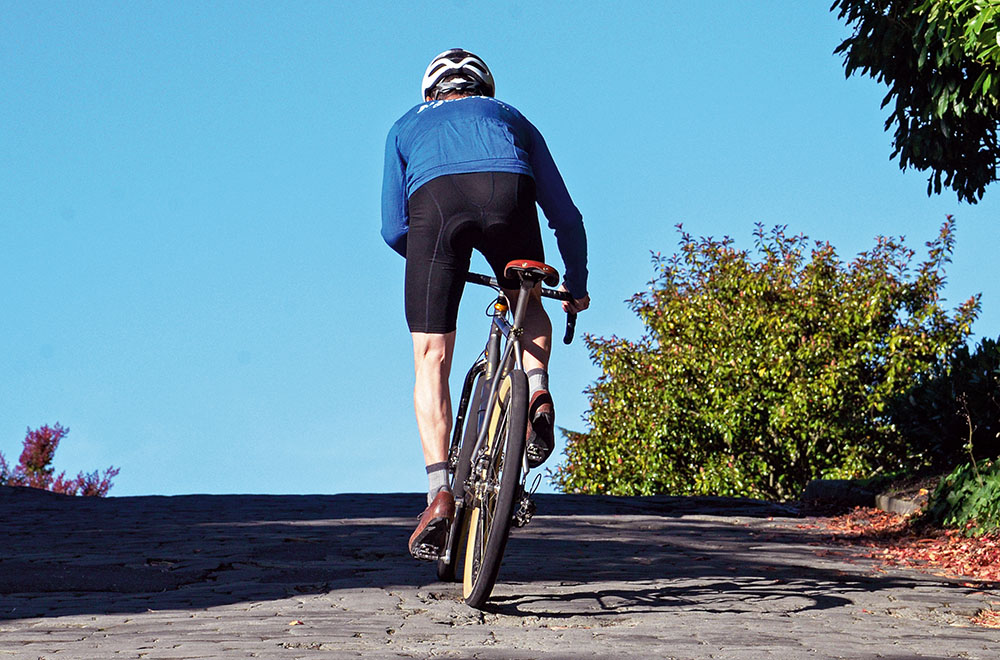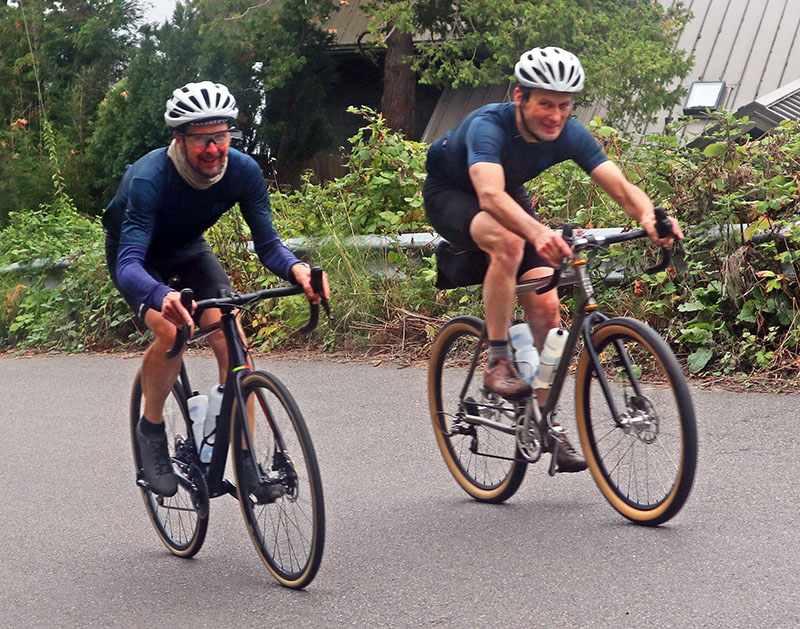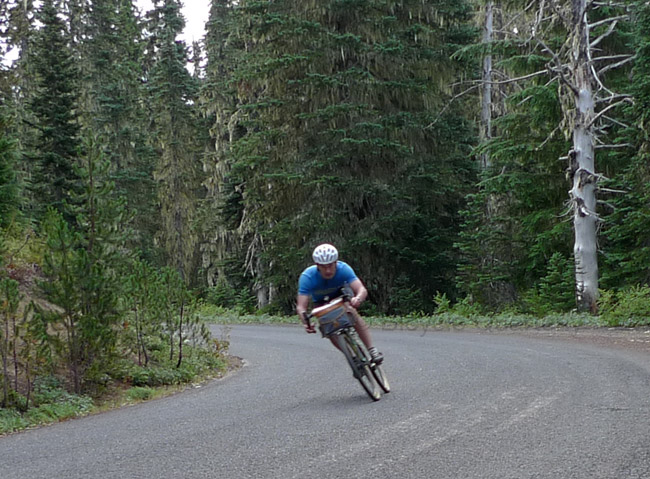Myths Debunked: Wide Tires Are NOT Slower
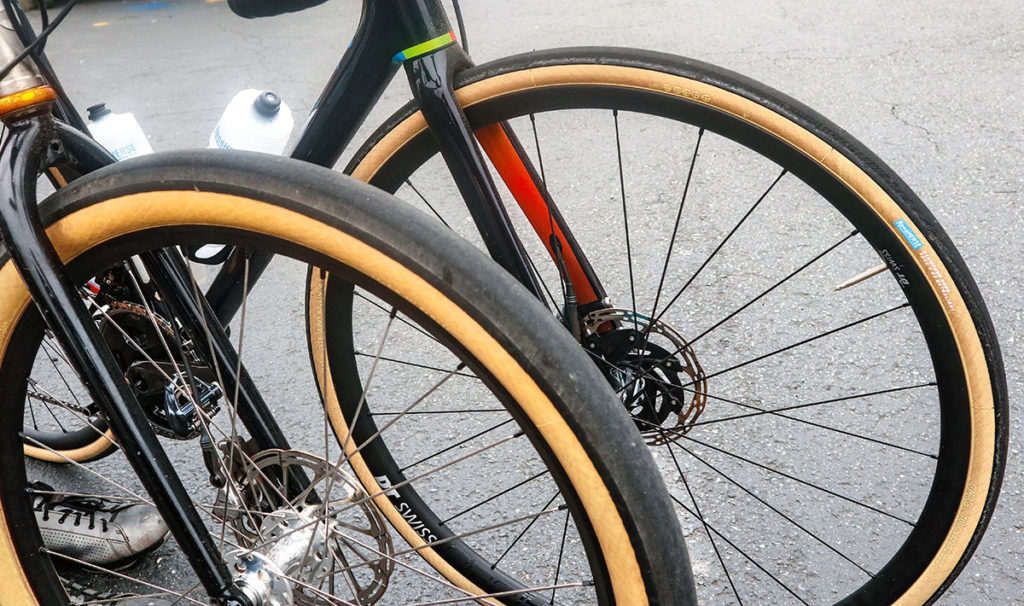
When we started to publish Bicycle Quarterly 15 years ago, it seemed that most of the technical aspects of bicycles were well-known. And yet, as we tested many different bikes, we started to question many of the things we had accepted as ‘facts.’ To celebrate our 15th anniversary, we’ll look at some of these myths. We’ll explain why we (and everybody else) used to believe them, and how things really work. Let’s start this series with the biggest one: Wide tires are not slower than narrow tires. Really!
Myth 1: Wider Tires Are Slower
For almost a century, cyclists ‘knew’ that narrower tires roll faster. Some people realized that in theory, wider tires are faster due to their shorter contact patch, which deforms less as they roll. But the thinking was that in practice, the lower pressure at which wider tires must run limited their performance. If you wanted to go fast, you chose narrow tires.
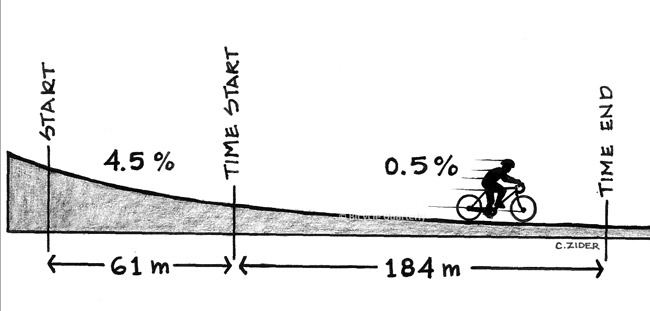
That is what we thought when we started testing tires almost 12 years ago. And yet, as long-distance riders, we wondered whether the narrowest tires, pumped to the highest pressures, really were optimal for us. What if wider tires were a few percent slower, but their greater comfort reduced our fatigue? Remaining fresh toward the end of a long ride would help us put out more power, so we might go faster in the end. What we needed to know was how much speed we would give up by going to wider tires.
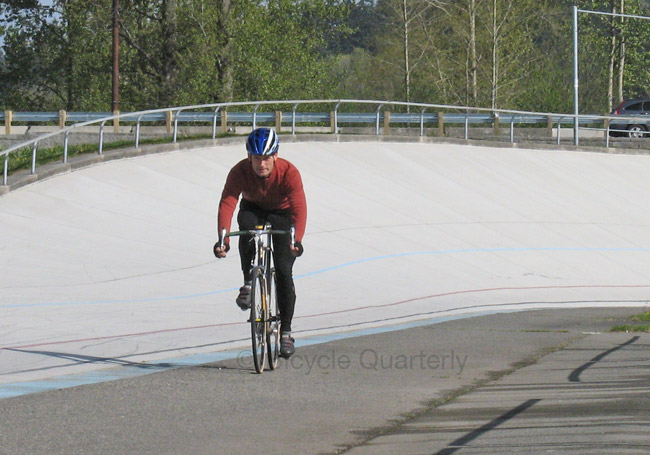
Real-Road Testing
So we started by testing 20, 23 and 25 mm tires (same tire model). What was different from previous tests is that we tested on real roads, with a rider on the bike. This meant that we were looking at the entire system, not just the tire itself. And the results were surprising.
The 20 mm tires were slowest, and the 25 mm fastest, with the 23 mm in the middle. This wasn’t what we expected! And yet, when we repeated our tests with a different methodology (power meter vs. roll-down), the results remained the same. There was no doubt that the narrowest tires were slower than slightly wider ones.
We showed our results to the tech people of a few pro teams. They did their own testing that confirmed our results, and soon pro racers moved from 23 to 25 mm tires.
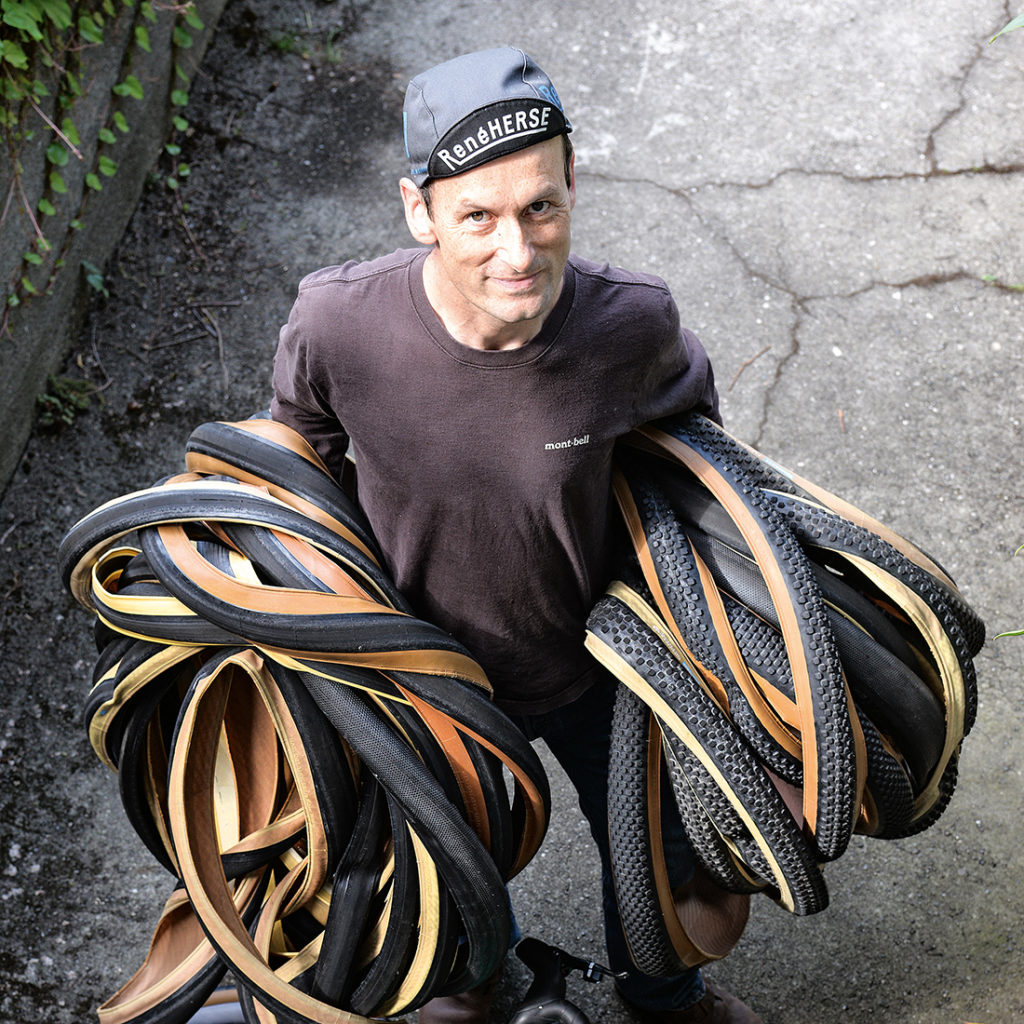
Then we tested wider tires, and realized that the performance of tires doesn’t change as they get wider than 25 mm: A 32 mm tire rolls as fast as a 28 mm, which performs the same as a 25 mm tire.
Based on this and other testing, we developed our Rene Herse tires and optimized them for performance and comfort on real roads. And since we now have very similar tires in widths from 26 to 54 mm, we’ve been able to do controlled testing of all these sizes. We found that they all perform the same. Even on very smooth asphalt, you don’t lose anything by going to wider tires (at least up to 54 mm). And on rough roads, wider tires are definitely faster.
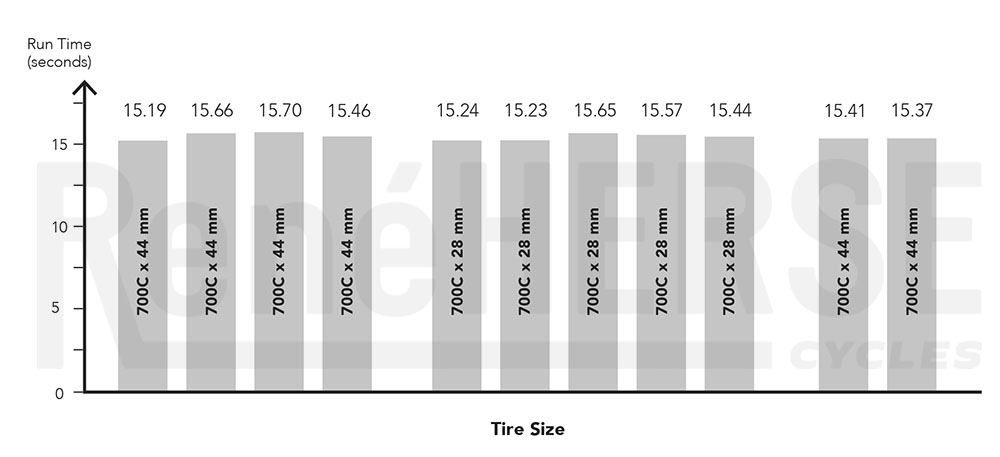
Above is just one of many test sessions, with Rene Herse Extralight tires. We ran a 44 mm tire four times, then a 28 mm tire five times, before running the 44 mm tire again. (Running the first tire again makes sure that conditions haven’t changed during our test runs.) When you look at the averages, there is no significant difference between the 28 and the 44 mm tires (15.43 sec / 15.47 sec). We can say that – even on smooth roads – a 44 mm tire rolls as fast as a 28 mm tire.
We’ve tested this dozens of times, both with roll-down tests and with power meters – above the averages of test runs with four sizes – and the result is always the same: On smooth pavement, there’s no performance difference between tires in the commonly used sizes (25-55 mm).
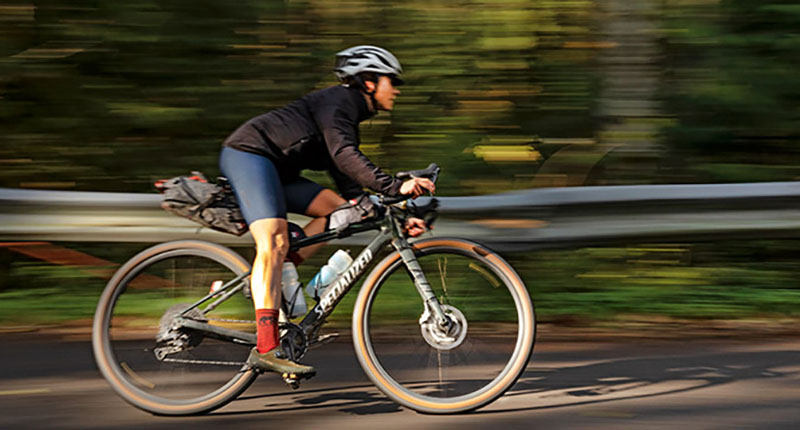
Long ago, cyclists used to know this. When pneumatic tires were first invented, the fast-riding ‘scorchers’ used wide tires, because they rolled over road irregularities better. And in the 1920s, Vélocio, the editor of the French magazine Le Cycliste, discovered that as long as wide tires had supple casings, they rolled as fast as narrow ones. But all this was forgotten in later decades, as racers went to narrower and narrower tires.
Why did it take almost a century to rediscover this? There are two reasons why cyclists used to believe that narrow tires were faster:
1. Laboratory tests on steel drums eliminate the rider and thus can’t measure the suspension losses (caused by vibrations). If you look at hysteretic losses (caused by tire deformation) alone, narrow tires run at higher pressures and thus flex less, meaning they absorb less energy.
We tested on real roads, with a rider on the bike, and found that the increased vibrations of the narrower tires caused energy losses that canceled out the gains from the reduced flex. These suspension losses are mostly absorbed in the rider’s body. Imagine a bean bag that drops to the ground without bouncing back – all the energy is absorbed by friction between the beans. The human body works similarly. Studies by the U.S. Army found that the more discomfort vibrations cause, the more energy is being absorbed. And the amount of energy that a vibrating human body can absorb is significant – the U.S. Army’s study measured up to 2000 Watt!
2. Placebo effect: The faster we ride, the higher the frequency at which our bike vibrates, because our tires encounter road irregularities at higher speed. However, narrow tires also increase the frequency of the vibrations they transmit, creating the same effect without going any faster. In other words, a bike with narrow tires feels faster even though it may actually be slower.
Inflating our tires harder is a simple way of tricking our brains into feeling that we are going faster. A bike computer will tell us that we haven’t actually increased our speed. Conversely, wide tires vibrate less, and thus feel slow to many cyclists.
So for almost a century, narrow tires felt faster and tested faster in the laboratory. There was little reason to doubt whether they actually were faster. It took Bicycle Quarterly‘s real-road tests to show that a vibrating bike (and rider) is absorbing energy that reduces the bike’s speed.
What all this means: If you run wider tires at lower pressures, you increase the flex of the tire (negative), but you reduce the suspension losses (positive): the two effects cancel each other, and your speed remains the same.
Of course, not all wide tires are fast. For a wide tire to be fast, it has to be made with a supple casing, like a narrow racing tire, but in a wider width. Supple casing are easier to flex, so they absorb less energy as the tires roll. And a supple casings reduce vibrations, which reduces the suspension losses. So supple casings use less energy on both counts. Talk about a win-win scenario!
And of course, since the supple casing absorbs vibrations better, high-performance tires are more comfortable, too. It’s important to remember: Not all wide tires are fast. A stiff, heavy touring tire is much slower than a supple high-performance tire – no matter how wide it is.
Aerodynamics
What about the aerodynamics of wider tires? Many riders believe that wider tires will be slower, because they have more wind resistance. We tested this in the wind tunnel and found that the difference between 25 and 32 mm tires was too small to measure reliably in a real-world scenario.
The German magazine TOUR built a sophisticated setup with a motorized dummy rider and found that a 28 mm-wide tire had the same wind resistance as a 25 mm tire when the wind was coming from straight ahead. With a crosswind, the wider tire was very slightly less aerodynamic. Even then, the wider tires required only 5 watt more – on real roads, the reduced suspension losses make up for that.
We tested our tires on smooth pavement at speeds of up to 22 mph (35 km/h), and found no speed difference between narrow and wide tires.
Spinning up
Wider tires are a little heavier than narrow ones. The difference is smaller than many cyclists imagine – the air inside a wide tire doesn’t add weight – but a wide tire has a little more rubber and casing. Won’t this make the wider tires harder to accelerate? The answer is “No.”
The reason is simple: Bicycles don’t accelerate very quickly. Even a professional bike racer’s power-to-weight ratio is far less than that of the slowest economy cars, and those don’t exactly push you back in the seat when you floor the throttle. Bikes don’t accelerate fast enough for small changes in wheel weight to make a noticeable difference.
If somebody tells you otherwise, ask them why professional racers don’t use the smallest (and thus lightest) wheels the rules allow. The UCI requires a minimum wheel size of 55 cm, yet racers use 700C wheels that are 10 cm larger than required. If wheel weight mattered as much as most cyclists imagine, then pros using the smallest wheels would win every race. And yet, even though many have tried smaller wheels, all have returned to 700C wheels – probably because the larger wheels handle better due to their optimized rotational inertia. (But that is a topic for another post.)
Conclusion
What this means for us riders is that we can choose wide or narrow tires, based on our personal preferences, without having to worry about performance. Of course, this doesn’t mean that a wide ‘touring’ tire will perform as well as a narrow ‘racing’ tire. Casing performance determines 95% of a road tire’s speed, and to get good performance, you need a supple high-performance casing.
Tire width influences the feel of the bike, but not its speed. If you like the buzzy, connected-to-the-road feel of a racing bike, choose narrower tires. If you want superior cornering grip and the ability to go fast even when the roads get rough, choose wider tires.
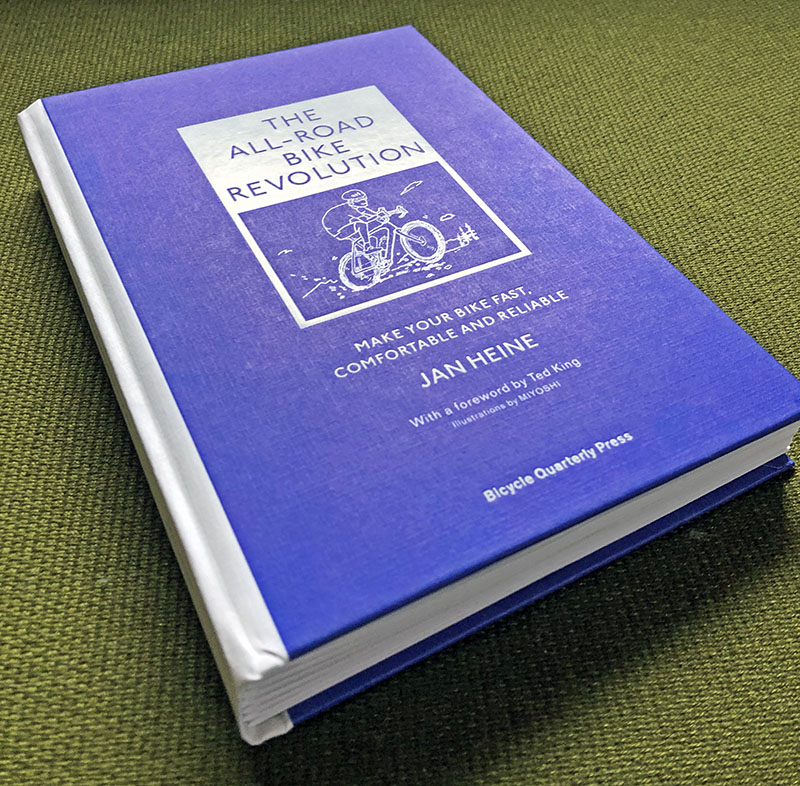
If you are interested in this and other research, check out our new book ‘The All-Road Bike Revolution.’ Find out why wide tires can be fast, how to find a frame that optimizes your power output, how to get a bike that handles like an extension of your body, and many other topics. More information is here.


